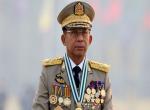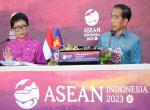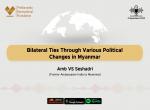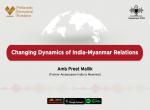As India strives to find its place in the international system and in the region as an important player, the result of the recently concluded 7 November 2010 elections in Myanmar has apparently thrown up some challenges for Indian strategy. There were about 3, 000 candidates contested for 1,063 seats to two houses of parliament and 14 regional or state assemblies. The Union Solidarity and Development Party (USDP), the National Union Party (NUP), the National Democratic Force (NDF), a break-away faction of National League for Democracy (NLD) along with the total of 37 political parties such as Shan Nationalities Democratic Party, Union of Myanmar Federation of National Politics, Democratic Party (Myanmar), Rakhine Nationalities Development Party, Kayin People’s Party and 88 Generation Students Youths (Union of Myanmar) contested in the elections. The new constitution also stipulated that 25 per cent of the seats in the parliament are reserved for the military.
The Myanmar Election Commission announced the final results on 17 November 2010. Accordingly, the USDP has won 883 or 76.5 per cent of the parliamentary seats and 259 or 79.6 per cent out of 325 seats in the House of Representatives; 129 or 76.7 per cent out of 168 seats in the House of Nationalities and 495 seats or 74.8 per cent out of 661 the seats of region or state parliament. The National Unity Party (NUP) secured 63 seats, of which 12 for House of Representatives, 5 with the House of Nationalities and 46 for region or state parliament. On the other hand, the Shan Nationalities Democratic Party (SNDP) won 57 seats, out of which 18 for the House of Representatives, 3 for the House of Nationalities and 36 with the region or state parliament. The Rakhine Nationalities Development Party secured 35 seats, 9 for the House of Representatives, 7 to the House of Nationalities and 19 in region or state parliament. Further, the National Democratic Force (NDF) and the All Mon Region Democracy Party (AMRDP) won 16 seats each to the parliament. A few seats were also won by other parties which fielded a lesser number of candidates for the election. This brings about a unique scenario.
There is no disagreement that the military rulers would have significant influence in the decision making in the foreseeable future. But, if the elected members of the parliament and regional assemblies are allowed to participate and function effectively as per the military rulers’ ‘The Seven Step Roadmap to Discipline-Flourishing Democracy’, it would offspring new power groups within the system, especially in the regional parliaments where the ethnic and rebel groups have considerable number of seats and influence. Another group is the retired military officers who became the members of the parliament as civilians. Although the retired military officers might owe their allegiance to the military in the shorter run, there is no gainsaying that they would continue to do so. As a power group, their interests are likely to clash with those of the military rulers. This can create a chasm within the ruling class.
Further, the minority ethnic groups such as Shan and Mon along with other groups have also entered the parliament, though in small numbers. The possibility of these groups – for instance the Shan State Army (SSA-South) is still fighting the military regime – wrangling with the military rulers is also exists, as the underlying tension between them remains unresolved, despite the existence of armed ceasefire between the military rulers and certain ethnic groups. The issues of regional autonomy, armed militia and drug trafficking remain the bone of contention. Besides, China has some level of control over ethnic Wa and Kokang militias.
Another group is the break-away faction of National League for Democracy (NLD), which purports to work for a broader and inclusive democratic set-up by using the available political space within the present system. But India seems to have negligible influence either over the ethnic minority groups or the retired military officers, unlike China. So, to what extent the changing political dynamics in Myanmar requires an adaptation of Indian strategy?
Although India’s pro-democracy stance and continued moral and material support for democratic movement against the military leadership in Myanmar had brought some brownie points as champion of democratic ideals; it failed to accrue any strategic benefits. Nonetheless India’s 1992 ‘Look East Policy’ initiated a certain momentum towards engaging the military rulers in Myanmar, limited attention was paid to Myanmar in Indian strategic calculations. But China’s response towards its southern neighbour was robust. China embraced Myanmar with diplomatic support in the UN; with economic aid to boost its ailing economy and augmented its military capabilities with equipments. This proved to be India’s disadvantage vis-à-vis China – India’s strategic competitor.
Even though Myanmar is seen as a client state of China, it remains independent to a certain extent in its engagement with other powers in the region. Myanmar has not only joined regional organisations but also been engaging Russia and India so as to avoid excessive dependence on China. Myanmar’s quest to maintain its independence in its engagements with other powers offers India an opportunity to negotiate to further advance its interests despite Chinese presence.
Hitherto, India has been engaging the military rulers successfully to a certain extent. India’s strategy towards Myanmar has generally been described as a reaction to China’s strategy than independent engagement with Myanmar. Although the present arrangement with Myanmar rulers seems to be serving India’s interests, it is limited. Neither India has acquired the capability to arrest growing Chinese influence nor advanced its interests in a significant way. As India prepares to protect and enlarge its interests in the region, it has to engage the emerging power groups in Myanmar. This is not to suggest that India has to disengage with the military rulers, rather to diversify India’s engagement with various groups in a meaningful way. Any such engagement with the new power groups in Myanmar would be an insurance against future contingencies. Besides, India also has to find alternatives to bespeak Aung Sang Suu Kyi’s National League for Democracy (NLD) as well, though they are functioning outside the present system. She has even expressed her displeasure over India’s position on the elections in an interview with John Simpson of BBC. The experience in Sri Lanka – where India’s reluctant realism led to the entry of China and Pakistan – forewarns India.
Apart from political engagements with various groups in Myanmar, India also has to increase is its trade and investments. The Indo-Myanmar trade is expected to reach $1 billion mark in 2009-2010.On the other hand, there are about 400 foreign companies from 31 countries engaged in business with an investment worth of $23 billion. But there are only five Indian companies operating in Myanmar and have invested about $2,000,000. As India possess vast potential in Information Technology (IT), manufacturing and construction, concerted effort is essential to translate them to its strategic advantage through investments so as to overcome Chinese influence in Myanmar.
In addition, it would be in India’s interest to increase the co-operation and collective efforts with Myanmar not only to tackle the problem of insurgency in the North East but also the ever increasing threat of terrorism. Therefore, the time appears to be appropriate for India to pro-actively engage various power groups in Myanmar.
--------------------------------------------
Published Date : December 1, 2010








Post new comment